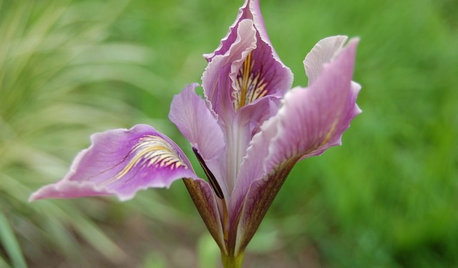Easy propagation of herbs (and other plants)... Soil layering.
VGtar
10 years ago
Related Stories

CONTAINER GARDENS8 Easy Container Plants to Grow From Seed
Get beautiful blooms and herbs in summer by starting these choice garden picks from seed in spring
Full Story
GARDENING GUIDESGardening Solutions for Dry, Sandy Soils
Has your desert or beachy site withered your gardening creativity? Try these ideas for a beautiful, easy-care landscape
Full Story
GARDENING GUIDESHave Acidic Soil in Your Yard? Learn to Love Gardening Anyway
Look to acid-loving plants, like conifers and rhododendrons, to help your low-pH garden thrive
Full Story
GARDENING GUIDES10 Solutions for Soggy Soil
If a too-wet garden is raining on your parade, try these water-loving plants and other ideas for handling all of that H2O
Full Story
GARDENING GUIDESGardening Solutions for Heavy Clay Soils
What’s a gardener to do with soil that’s easily compacted and has poor drainage? Find out here
Full Story
GARDENING GUIDESGrow a Beautiful Garden in Alkaline Soil
Got alkaline soil? Learn how to manage it and the many beautiful plants that will thrive in this ‘sweet’ soil
Full Story
GARDENING GUIDESInvite Cellophane Bees to Your Garden by Providing Patches of Bare Soil
Look for cellophane bees (Colletes) pollinating flowering trees and shrubs in U.S. gardens this spring
Full Story
EDIBLE GARDENS8 Surefire Vegetables and Herbs for Beginning Gardeners
Learn the edible plants that are popular and easy to grow in a backyard or container garden
Full Story
FLOWERSPaint a Garden Delightful With Iris
Charming and colorful, irises propagate easily, are hardy in many soils and climates, and unfold with layers of beauty
Full Story
GARDENING GUIDESHow to Pick a Mulch — and Why Your Soil Wants It
There's more to topdressing than shredded wood. Learn about mulch types, costs and design considerations here
Full StorySponsored
Most Skilled Home Improvement Specialists in Franklin County






christine1950
Tiffany, purpleinopp Z8b Opp, AL
Related Professionals
Bell Gardens Landscape Contractors · Fairhope Landscape Contractors · Longmont Landscape Contractors · Mastic Beach Landscape Contractors · Muttontown Landscape Contractors · Oakland Landscape Contractors · Salem Landscape Contractors · Wailuku Landscape Contractors · Waltham Landscape Contractors · Westford Landscape Contractors · Yuba City Landscape Contractors · Chattanooga Driveway Installation & Maintenance · Cincinnati Driveway Installation & Maintenance · Grand Rapids Driveway Installation & Maintenance · Sterling Driveway Installation & MaintenanceVGtarOriginal Author
chloeasha